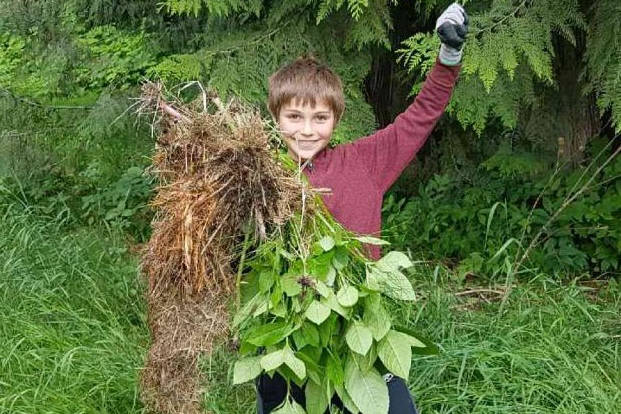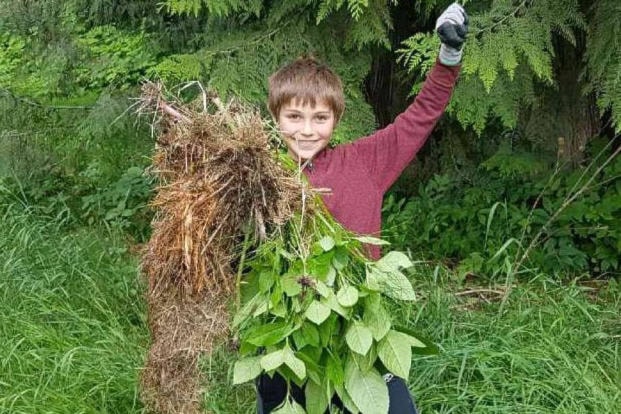Volunteers took action in protecting Revelstoke’s biodiversity by participating in a community weed pull for invasive Himalayan balsam at the Selkirk Saddle Club, last week.
Around one quarter of an acre of plants that were beginning to infest native forest surrounding the grounds were cleared of the invasive plants.
“These plants may look great but they will soon take over your yard if introduced,” said Sue Davies of the Columbia Shuswap Invasive Species Society. “Fortunately it is very easy to pull, so if you have it in your garden, pull it out before it seeds to prevent it taking control of your yard.”
The Columbia Shuswap Invasive Species Society (CSISS) partnered with North Columbia Environmental Society (NCES) in coordinating this weed pull.
Although Himalayan balsam has an attractive, pink flower (also known as poor-man’s orchid or policeman’s helmet), it has serious negative environmental impacts and can easily spread into large infestations that become much more challenging to remove. Himalayan balsam grows rapidly in moist areas. According to the Invasive Species Council of BC, infestations of Himalayan balsam can lead to clogging of our waterways and ditches, as well as soil erosion because of it’s shallow, fragile root system. Himalayan balsam has ‘popping seeds’ that spread rapidly and help it outcompete native plants and ecosystems.
Fortunately, hard-working volunteers from the Revelstoke community are removing the plants early in the season, and acting as stewards to help control this infestation of Himalayan balsam.
For more information, please visit our website at columbiashuswapinvasives.org/host-a-weed-pull/ or contact CSISS at info@columbiashuswapinvasives.org, or 1-855-785-9333.

